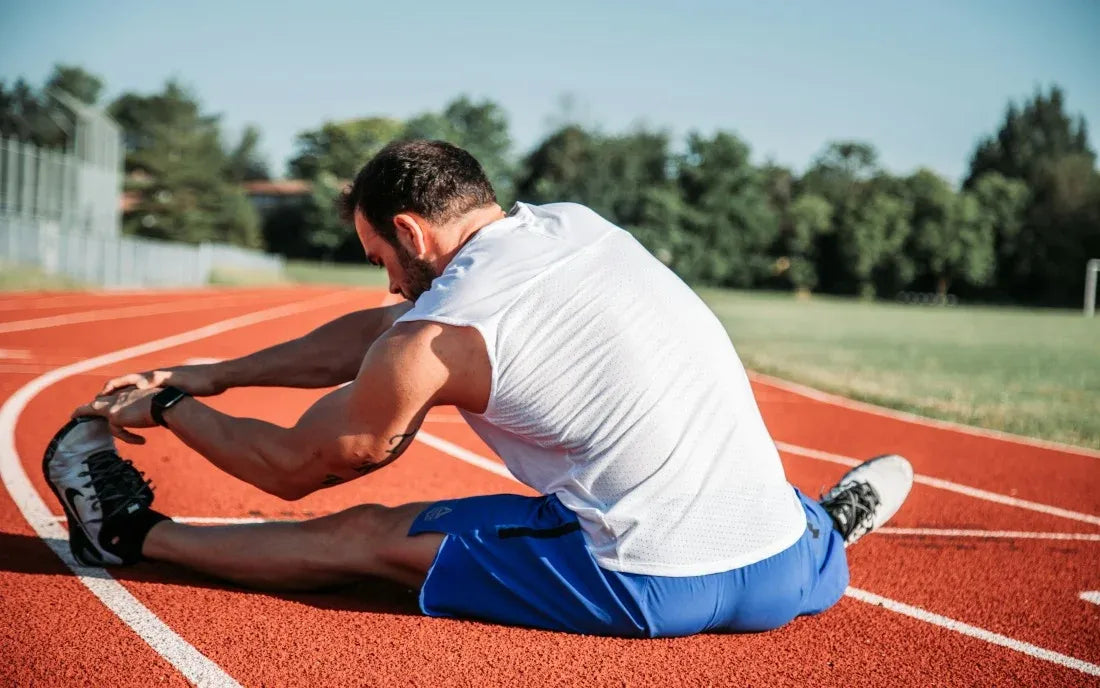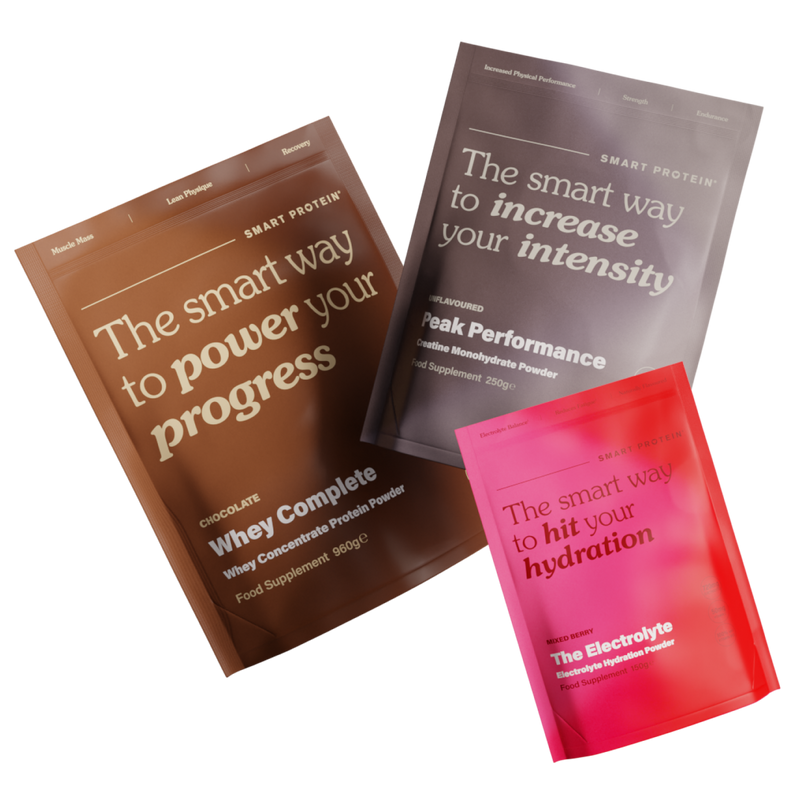Active recovery days are a golden ticket for top athletes. When it comes to healing from those intense workouts, it's not just about those fancy ice baths and deep tissue massages or making sure you fuel your body with proper nutrition. It's also about how you keep moving when you're not working hard at the gym.
We know it can be tempting to plop yourself on the couch and wait until your next gym session when you're feeling a little sore after crushing that heavy lifting session. But getting up and moving around—whether it's a little or a lot—is going to do wonders for getting you back in the game faster than you can imagine.
In this Smart guide, we’ll address the questions: What should you do on your off days? How much activity is too much? Should you stay active on all of your off days?
We'll explore what it really means, the scientific principles behind it, and how you can seamlessly integrate it into your routine.
So, sit back, relax, and immerse yourself in the world of active recovery.
What is active recovery?
Active recovery involves specific exercises that you can do during your workout, right after, or even in the days that follow.
Most of the exercises you do on your active recovery days are the same ones you'd normally do during your regular workouts. So, if you enjoy cycling or jogging—you're in luck—because those are two popular options for active recovery.
You get to have fun while giving your muscles some love. It’s a win-win.
Your maximum heart rate can vary based on your age, and you can calculate it by subtracting your age from the number 220.
By exercising within this lower range of your MHR, you'll get that heart rate pumping and your blood flowing without putting too much strain on your muscles.
Active recovery days are an essential part of your program, just like your regular lifting days. It's important to weave them into your routine to ensure your body stays safe from overtraining.
These days are not just about rest, they're about taking intentional action towards your goals.
By prioritising mobility, flexibility, and short bouts of steady-state cardio, you're setting yourself up for success.

Why are active recovery and rest days important?
We all know that every athlete is unique, with different needs and circumstances. That's why there's no one-size-fits-all answer when it comes to active recovery.
The nuances of active recovery will vary for each person. And it will depend on factors like age, sport, and level of development.
But amidst all these differences, there's one general principle that applies to every athlete out there.
Exercise, especially intense workouts, creates these tiny tears in your muscles. As your muscles heal during rest and recovery periods, they gradually become stronger and bigger.
This process of growth and improvement takes place when you give your body the time it needs to repair itself.
Active and passive recovery: What’s the difference?
While active recovery and passive recovery differ in many ways, they share a common goal—to support our overall wellbeing.
But what’s the difference between the two?
Active recovery
Now, moving on to active recovery, an approach that involves incorporating gentle, non-strenuous movements to aid in the muscle recovery process after intense physical activity.
Think of it as giving your muscles a little love and TLC. We've got some examples to get your creative juices flowing for an active recovery day…
- Lightly jogging in between sets of a sprinting workout: It keeps your body moving while allowing your muscles to recover.
- Yin yoga, which includes passive longer-held poses, after a strength training session: It helps release any tension and promotes flexibility.
Passive recovery
While passive recovery may not be as effective as active recovery, we all need those moments of stillness and rest, giving your body the space it needs to recharge. Here are some examples:
Getting enough sleep: It's essential for repairing and restoring your body.
Relieving stress through meditation: It helps calm your mind and promotes a sense of overall wellbeing.
Fueling your body with a balanced diet, including foods that relieve muscle soreness: Think nourishing, whole foods that support your recovery.

What are some benefits of active recovery?
Active recovery boasts a range of incredible benefits. It's not just great for your body but also for your mind, and achieving those all-important personal bests.
Taking on the active recovery workouts and active recovery sessions harness the potential to unlock your peak performance.
Something important to note down: active recovery shines when you go at your own pace (2). So, focus on listening to your body and embracing your unique journey.
Here are some of the remarkable benefits you can expect when you embrace a bit more movement on your non-workout days.
Reduced inflammation post-workout
After a tough workout, inflammation can creep up and cause muscle damage.
Active recovery comes to the rescue by boosting blood flow to your muscles. This blood carries precious oxygen and nutrients that aid in muscle repair and help reduce inflammation.
Promotes overall well-being and relieves stress
Active recovery workouts filled with fun and movement you enjoy are practically guaranteed to boost your mood.
It's not just about physical benefits—it's about nurturing your mind and soul too. So, get ready to tap into that positive energy.
Reduces muscle fatigue
Did you know that as little as 20 minutes of post-exercise recovery techniques can effectively reduce fatigue? A study (3) has shown that active recovery outperforms passive recovery in combating muscle fatigue.
Just remember to focus on the same muscle groups you recently trained for maximum impact.
Promotes greater fitness gains
We all strive for those amazing fitness gains. Well, active recovery can help you get there faster.
Adding active recovery into your routine will prime your body to reap the benefits of intense training (4).
Reduces discomfort from delayed onset muscle soreness (DOMS)
If you're familiar with the dreaded muscle soreness that kicks in a couple of days after a challenging sweat session, active recovery is your ally.
By increasing blood flow and incorporating stretching, you can alleviate that temporary discomfort and minimise its impact on your journey to greatness.

Active recovery workout examples
Did you know? You can transform many popular exercises into active recovery workouts just by tweaking the intensity.
And the best part is that anyone can do it—fitness level or experience aside. So, let's dive into this exciting world of muscle recovery and discover how activities like cycling and jogging can work wonders for your body.
Walking
Walking is a fantastic starting point for active recovery. It's a gentle, light activity that packs a surprising punch when it comes to benefits.
Taking a brisk stroll is a straightforward, cost-free alternative that most people can embrace. Putting one foot in front of the other can work wonders, from improving your sleep and boosting your memory to reducing those pesky anxiety symptoms.
Swimming
Swimming is a low-intensity exercise that has a wealth of active recovery benefits. While it may not always be as low-cost as walking, it offers a treasure trove of body-boosting benefits.
The secret? The water itself helps reduce inflammation and prevent sore muscles.
Cycling
Cycling, whether indoors on a stationary bike or outside in the great outdoors, is an excellent choice for active recovery.
The main benefit of a light bike ride is the boost it brings to your blood circulation without challenging any muscles that may be recovering from a previous workout—offering the perfect balance between movement and rejuvenation.
Yoga
This ancient practice of yoga is not just about flexibility and balance—it's also a powerful form of active recovery.
Even engaging in gentle yoga can have positive effects on your body. It helps regulate blood glucose levels, reduces musculoskeletal aches and pains—and improves your posture (6).
Foam rollers
Foam rolling is like giving yourself a soothing massage and helping your muscles recover. Many health and fitness experts believe that foam rolling reduces tightness, soreness, inflammation—and even improves your range of motion. Bonus.

Supplements for muscle soreness and recovery
If you need a helping hand and an extra source of recovery, supplements can plug the gaps.
While your main source of nutrition for post-workout recovery should come from whole foods—it's also a good idea to use dietary supplements to help weak links in your diet.
Let’s take a look at the types of supplements you need to succeed.
Electrolytes
Supplements containing electrolytes can help muscle recovery by replenishing essential minerals lost during exercise.
Sodium, calcium, and potassium can be lost when we sweat—so you must replenish them afterwards.
Protein
Protein contains essential muscle amino acids, which are necessary for muscle repair and recovery.
This is a process known as protein synthesis. Without it, you cannot build stronger muscles.
Taking a protein supplement pre as well as post-workout can enhance your recovery immunity and muscle growth.
Vitamins
Many vitamins can aid in muscle recovery—and vitamin C is one of them. Primarily known for its immunity-boosting properties, vitamin C reduces post-workout discomfort and muscle damage.
Vitamin D also plays a vital role in muscle function and recovery from inflammation caused by intense exercise, and Vitamin B complex is excellent for promoting muscle repair.
A decent multivitamin supplement will cover all bases and make sure you're adequately topped up.
Get Smart with your Supplements
In addition to getting into good lifestyle habits while focusing on your diet and sleep, taking the right supplements will elevate and improve performance.
Not only will working with the right supplements fill in any nutritional gaps and give you energy—but there are certain products or formulas that can improve your focus.
Our Raise Performance Kit contains three supplements designed to level up your training sessions, keep you topped up with body-boosting electrolytes as well as essential branched-chain amino acids (BCAAs)—and sharpen your mental focus when you need it most.
Check out our Raise Performance Kit today and level up your performance in ways you never thought possible.
We hope this Smart Guide helps you on your journey, and if you’d like tailored recommendations on the supplements that will suit your personal goals—try our quick Smart Quiz.
SOURCES:
Smart Protein is committed to sourcing only the best and scientifically-backed research in our articles.
- Ncbi
https://www.ncbi.nlm.nih.gov/pmc/articles/PMC5932411/
2. Ncbi
https://www.ncbi.nlm.nih.gov/pmc/articles/PMC5499938/
3. Ncbi
https://www.ncbi.nlm.nih.gov/pmc/articles/PMC5051742/
4. Journal of Strength and Conditioning Research
https://journals.lww.com/nsca-jscr/fulltext/2019/04000/active_recovery_induces_greater_endurance.4.aspx
5. PubMed
https://pubmed.ncbi.nlm.nih.gov/19908172/
6. Ncbi
https://www.ncbi.nlm.nih.gov/pmc/articles/PMC5332914/
7. Ncbi
https://www.ncbi.nlm.nih.gov/pmc/articles/PMC6805773/

